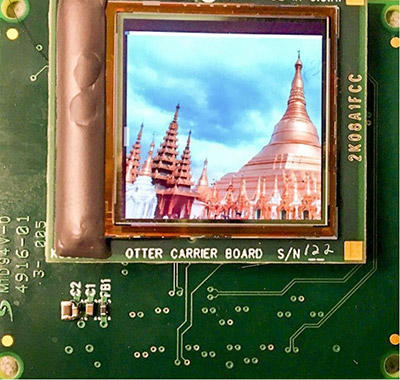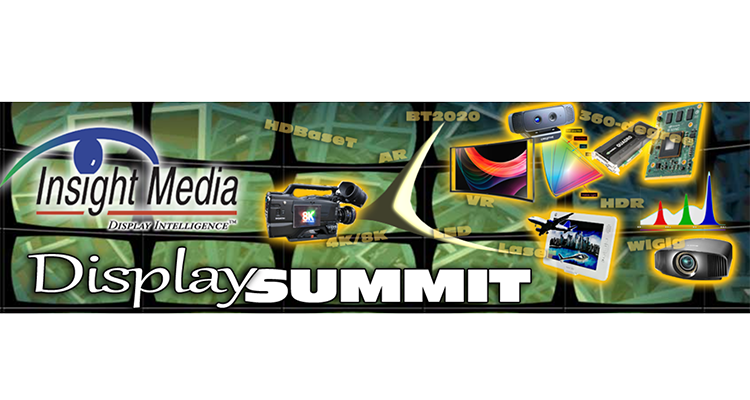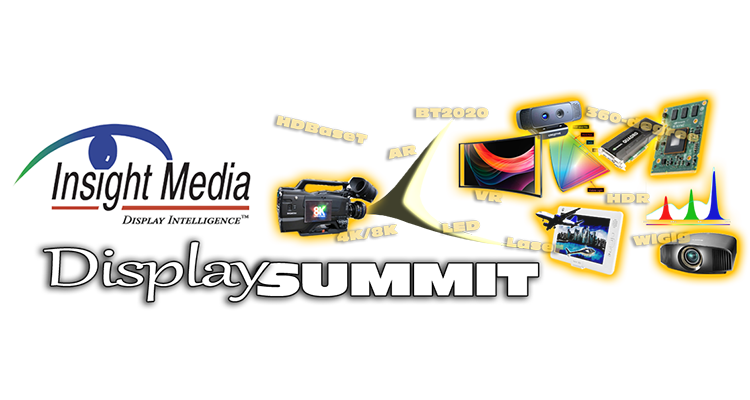Quantum Dots: The End of White LEDs in Backlights?
In late January, Nanosys announced it had signed a “definitive commercial agreement” with LG Innotek (LGIT) for the use of Nanosys’ quantum-dot phosphors in displays. The agreement “represents the first real world commercial application of quantum dots in electronics,” the Nanosys announcement said.
LGIT seemed equally enthusiastic. “Nanosys’ Quantum Rail technology is a solution ready for integration into backlight sub-assemblies without major tooling changes, making it our first choice for our next-generation high color gamut displays,” said Charlie (Cheol-Kee) Hong, LGIT VP and head of the company’s R&D Center.
 Nanosys fabricates what it calls a Quantum Rail (QR), a continuous component consisting of quantum dot phosphors in a polymer matrix. In a typical LCD edge light application, the QR is fastened with optical adhesive to the strip of blue LEDs that are the light source for the BLU. The “green” quantum dots down-convert the blue light to narrow-spectrum green and emit it into the light-guide plate. The “red” QDs do the same for red. The mixture is also carefully balanced to allow just the right amount of blue light into the light guide, too. This results in narrow-spectrum light sources for R, G and B, whose peaks can be tuned to suit the needs of the application. It produces a triangular color gamut that exceeds 100 percent of AdobeRGB and is considerably greater than the gamut of conventional modern LCDs. It also provides an improvement of 20 percent in power efficiency compared to existing backlight solutions, says Nanosys, probably because the color filter transparency can be increased due to the improved spectrum.
Nanosys fabricates what it calls a Quantum Rail (QR), a continuous component consisting of quantum dot phosphors in a polymer matrix. In a typical LCD edge light application, the QR is fastened with optical adhesive to the strip of blue LEDs that are the light source for the BLU. The “green” quantum dots down-convert the blue light to narrow-spectrum green and emit it into the light-guide plate. The “red” QDs do the same for red. The mixture is also carefully balanced to allow just the right amount of blue light into the light guide, too. This results in narrow-spectrum light sources for R, G and B, whose peaks can be tuned to suit the needs of the application. It produces a triangular color gamut that exceeds 100 percent of AdobeRGB and is considerably greater than the gamut of conventional modern LCDs. It also provides an improvement of 20 percent in power efficiency compared to existing backlight solutions, says Nanosys, probably because the color filter transparency can be increased due to the improved spectrum.
In addition, the approach is compatible with multi-primary displays. For a Sharp Quattron-type application, you can simply add quantum dots engineered to produce yellow, and you have the light source for a four-primary display.
This contrasts sharply with the most popular current approach to LED edge lighting, which is to use a white LED. A “white” LED is essentially a blue LED with the addition of a crystalline phosphor, cerium-doped yttrium aluminum garnet (YAG:Ce) being the most common. The blue light excites the YAG:Ce, which emits with a broad spectrum peaking in the yellow. The combination of the blue and yellow light yields a white. In an exclusive telephone interview, Nanosys CEO Jason Hartlove noted that white YAG LEDs were a step backward in color from CCFL, since both the green and red were relatively weak.
But, Hartlove said, image superiority is not the only reason panel makers are excited about the quantum-dot approach. The value proposition also includes reduced cost and better supply-chain control. Quantum dots permit the use of blue LEDs as the underlying light source for LCD edge lights instead of the white LEDs. The significantly lower cost of the blue LEDs compensates – or more than compensates – for the cost of the QR component, Hartlove said. He went on to explain that the price of a white LED of the kind typically used in LED edge lights is about 25 cents, while the cost of a blue LED is 5 or 6 cents if you have an internal source of supply, as Samsung (for instance) does.
Since a white LED is basically a blue LED with some YAG inside, you would think that the YAG is the source of the price differential. But YAG is not really expensive itself. It costs about $2000 per kilogram, but since only micrograms are used, the material adds little to the cost of the LED. However, Hartlove said, the IP is tightly controlled by Nichia and others, and this serves to keep prices high. (Nichia has been particularly aggressive in defending its IP.) Samsung, LG, and other panel-makers would like to get around this cost, Hartlove said, and gain greater control of their supply chains by creating their own blue LED solutions.
 For its initial applications, LGIT is looking at notebook panels, smart phones, and tablet PCs. Hartlove expects QR production units to appear in a TV set in 2012, with demonstrators to be shown this year.
For its initial applications, LGIT is looking at notebook panels, smart phones, and tablet PCs. Hartlove expects QR production units to appear in a TV set in 2012, with demonstrators to be shown this year.
So how big a deal is this? Hartlove said that Nanosys customers are excited about the technology, and he believes that most LED edge lighting will make the transition to quantum dots and blue LEDs over the next few years.
Ken Werner is a senior analyst and editor for Insight Media. Reach him at kwerner@insightmedia.info





